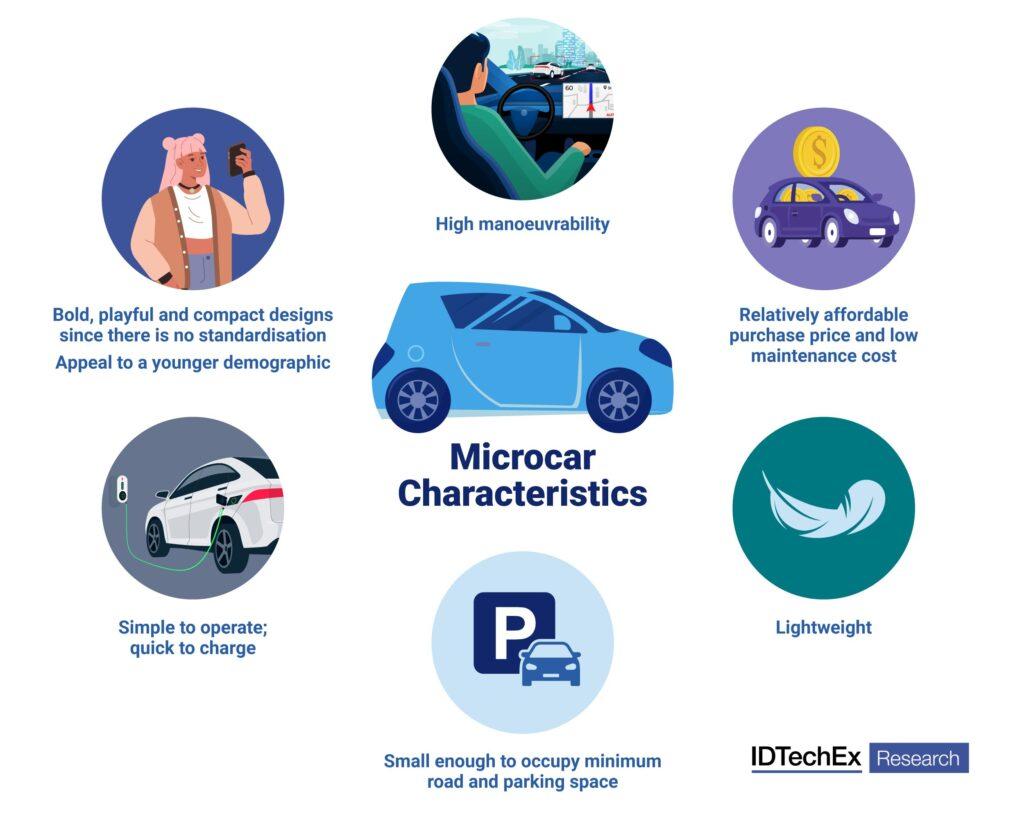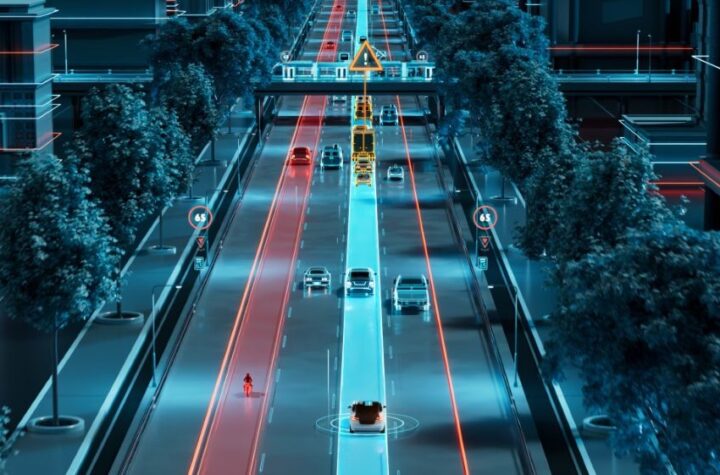
There is a need to scrap the “highway-centric” model of urban development and prioritize the ease and convenience of local trips. Most car trips are short trips carrying just one person. Most of the energy is wasted on carrying the vehicle’s own weight. Oversized vehicles are the root cause of urban congestion, pollution, waste of energy, material, and public space. As cities everywhere move toward a high-density, low-speed, low-impact model, it calls for a new type of personal vehicle to be created for people to get around conveniently. Microcars are one solution.
Microcars are the smallest size of four-wheeled electric vehicles (EVs). When unoccupied, these vehicles have an average weight of between 100 and 500 kilograms. Depending on the vehicle type and local regulations, their maximum speed varies from 25 to 90 kilometers per hour. From a technical standpoint, these cars are easy to make, which explains why they have often been produced by small firms which have small factories. However, some larger OEMs like Renault and Citroen have also shown interest by launching their own models. The IDTechEx report, “Micro EVs 2023-2043: Electric Two-Wheelers, Three-Wheelers, and Microcars”, benchmarks over 25 models of microcars from various countries on key metrics like motor power, battery capacity, and range.
As with any new form of mobility, many buzzwords are used to categorize the variations currently available on the microcar market. Generally, the distinguishing features of microcars are i) compact size and lightweight and ii) top speed limited to urban environments, putting them in the category of Micro EV. IDTechEx sees microcars fitting in between electric cars and electric mopeds on the mobility spectrum. Even then, there can be a lot of variation in terms of what a microcar looks like or is categorized by. Some other terms that may be used to describe a microcar regionally include quadricycles (EU and UK), Neighbourhood EVs (US), and Kei cars (Japan).
China’s Smallest Car Segment Is Entirely Electric
In China, passenger cars of different sizes are divided into six levels: A00, A0, A, B, C, and D, with A00 describing micro-sized models with a wheelbase of 2m to 2.3m each and A0 describing small-sized models with 2.3-2.5m wheelbases.
China added an A00 vehicle category in 2019 to combat the illegal lead acid microcars. This vehicle class is for low-speed, passenger EVs with less than four seats. A particular emphasis on the use of LFP or NMC-type battery chemistries is specified, aimed to reduce the illegal lead-acid waste (80% of which comes from unregistered microcars). According to data from the China Passenger Car Association (CPCA), combustion cars in the A00 class are virtually dead. The smallest A00 vehicle segment in China is dominated by electric variants. In 2021, on average, electric models made up 90% of all A00 vehicles sold. The IDTechEx report, “Micro EVs 2023-2043: Electric Two-Wheelers, Three-Wheelers, and Microcars”, on the topic takes a deep dive into the role of microcars and provides historical sales figures by region along with a 20-year forecast for uptake.
These vehicles are treated more as a low-cost daily short-haul commuter rather than fitting into the traditional car ownership concept. The Wuling Honguang Mini is the best-selling sub-compact A00 model in China. As of December 2022, sales since inception have passed 900,000 units, and the Mini EV has become the second-best-selling electric car in China. Various models exist in this price-sensitive A00 market, but the Mini EVs have a strong price advantage. OEMs like SAIC Motor, Great Wall Motor, Chery Automobile, Changan Automobile, and Jianghuai Automobile sell A00-class cars as this is a booming sector. IDTechEx forecasts this market to exhibit a 10% CAGR in the next two decades. The IDTechEx report includes microcars from various OEMs and startups, along with market shares for key regions.
Concerns Around Microcars
Common concerns about microcars include safety, vehicle design, and regulations. Since microcars are driven on the road besides standard cars, safety is a top concern to protect the drivers. There are areas for improvement, whether this involves a stronger vehicle frame and adding airbags to protect the driver from collision or building better suspension to keep the driver in control when going over potholes. To support improving the maturity and robustness of microcars, it will be necessary to have more regulations to mandate safety requirements. Many of these microcars are considered legal motorized vehicles, but they lack the standardization and regulations that car manufacturers must adhere to. In addition, some microcars do not require a driver’s license.
Autonomous Microcars Being Tested
Many microcar manufacturers see their vehicles offering an autonomous shuttle service in the future. In order to build this solution, they are partnering with autonomous driving companies who need to find vehicles that are flexible, energy-efficient, low-cost, and ready to deploy quickly. Applying autonomous technologies in this way has the potential to solve nationwide issues such as transit in crowded cities, lack of transportation options, and diminishing parking spots. Honda is developing the “CiKoMa” to help people in Japan get around in autonomous microcars. Honda cites Japan’s aging population, declining birthrate, and the global pandemic as a few of the reasons why it sees the need for small self-driving EVs, which people can hail and even depend on for basic transportation. IDTechEx’s latest report provides an in-depth analysis of the microcar market, with opportunities for motor manufacturers, battery suppliers, and fleet operators.
To find out more about the IDTechEx report, including downloadable sample pages, please visit www.IDTechEx.com/MicroEV.




More Stories
TomTom’s Orbis Maps with 3D Lane geometry set new standards for mapping precision
Accelerating The Development of Hydrogen Vehicles & Infrastructure – Europe’s Biggest Players Meeting at Premier Event
Automotive IQ Announces the 15th Annual Automotive Functional Safety Week 2025